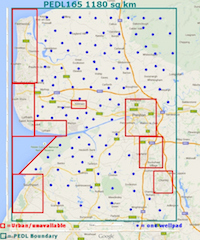Why Cuadrilla really stopped work in Lancashire 2 months ago
Two months ago we posed the question of why Cuadrilla were claiming to be voluntarily delaying their drilling at Anna’s Road
Now, they had been waiting rather impatiently for nearly 2 years for the unofficial ban on fracking to be lifted. They messed up their drilling at Anna’s road and wasted 3 more months. They expect us to believe that they are prepared to voluntarily go for another year without seeing a penny returned on their already massive investment just because they have suddenly converted to the idea of doing proper EIAs? Really?
It didn’t really stack up that a business which has yet to make any real return for its investors would wait another year because they now claimed to want to do proper Environmental Impact Assessments – especially as they had been going to some lengths to get important areas of the EIA’s excluded only weeks before.
Well it seems that the real reason is now emerging.
In the Times on Saturday, an article appeared which stated that Cuadrilla were likely to receive approval from the Environment Agency for 8 permits covering fracking at 3 new sites in Lancashire at the end of the month. Apparently the final decision will be made after “public consultation” – hmm they only have two weeks before the end of the month to start that consultation don’t they?
The most illuminating part of the article though was the revelation that:
Lord Smith revealed that the process had been held up by “one or two months” after Cuadrilla Resources claimed it should not be subject to tough regulations requiring it to monitor closely any contamination of aquifers after fracking takes place.
Cuadrilla’s plans for fracking involve blasting up to 8.5 thousand cubic metres of water as well as toxic chemicals and proppants into the shale to make the gas flow.
Between 20-50% of the fracking fluid flows back to the surface, having picked up some nasty carcinogens and other hazardous material whilst underground, and also becoming mildly (that’s 90 times the permitted disposal level without a permit) radioactive. The rest remains under ground. There is a danger that any failure in well integrity might lead to the contaminated fluid leaking into the local aquifer with the resulting contamination of the water.
It seems that Cuadrilla argued that the EU Mining Waste directive should not apply to the contaminated fracking fluids that remained underground. However, this directive makes it incumbent on operators to check on a regular basis that the fluid underground cannot and does not escape.
Under this Directive shale gas operators have to make absolutely sure that the underground fluid is under proper control, properly sealed and check that it continues to be the case for decades after fracking.
This is all right and proper as we can’t just have cowboys riding in, taking their profit and then abandoning the wells and leaving any clean up problems to us long after they’ve gone. It seems perfectly reasonable that if they want to build wells they have to be responsible for them.
In spite of initially fighting this ruling Cuadrilla have now had to accept that the Directive should apply.
Given Cuadrilla’s have sought to reassure the public that it is well nigh impossible for fracking fluid to escape. They say on their website
Importantly, Cuadrilla always has at least three layers of steel casing at depths where the aquifer is found. These casings – the surface casing, the intermediate casing and the production casing – are cement-sealed and extend hundreds of feet below the aquifer. This is a comprehensive safety feature of our well designs and prevents contamination of the ground water.
With that level of certainty we can’t really see why they had a problem with this – unless they are perhaps not as sure as that statement might suggest when it comes to having to back up their words with actions and hard cash?
However , we are pleased to see that the one of the disparate and rather uncoordinated band of regulators is at last taking meaningful steps to address some of the serious issues around the potential pollution which could arise from contaminated fracking fluids leaking into the environment.



























